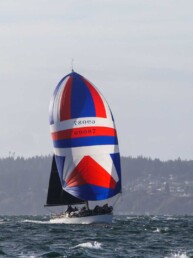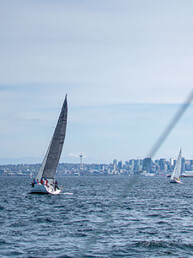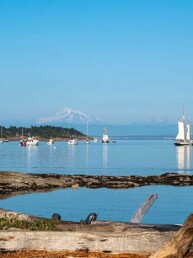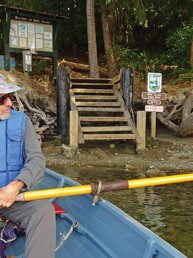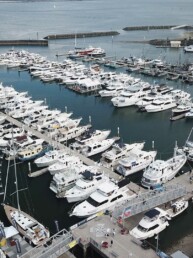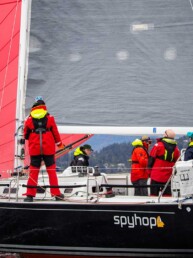If you have never cruised outside of the Salish Sea’s fairly protected waters, a certain amount of anxiety about sailing the west coast of Vancouver Island is natural.
The waters on the Inside Passage are not without their own challenges: steep tides and currents, massive logs and winds that can quickly whip up unfriendly seas.
But, for many cruisers, the thought of encountering large rolling swells, seeing waves explode on nearby rocky shorelines, or having fog envelope the boat just as you sail close past craggy reefs makes the outside route daunting. Combined with the relative isolation and lack of cell service, well, it’s enough to put many folks off even considering it.
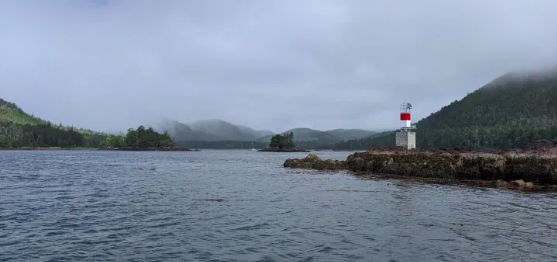
We have sailed offshore, across Asia, and the southern shores of Korea have many similarities to Vancouver Island’s west coast, with fast currents, cold water, fog and extreme tides. So we were both a little surprised by our growing anxiety as we approached the northern tip of Vancouver Island on our counter-clockwise circumnavigation of the island.
We had heard tales of mountainous seas when crossing the dreaded Nahwitti Bar. In my admittedly over-active imagination, those seas were going to be bigger than anything I had ever encountered. There were also stories of sailors waiting many days in Bull Harbour before daring to tackle Nahwitti.
We pored over weather forecasts and matching wind with current directions and speeds, slacks, time of day, boat speed. There is lots of information to be found, but suffice it to say it’s all a matter of timing. We were lucky and after only one night in Bull Harbour we headed off at first light to make a 0658 low slack.
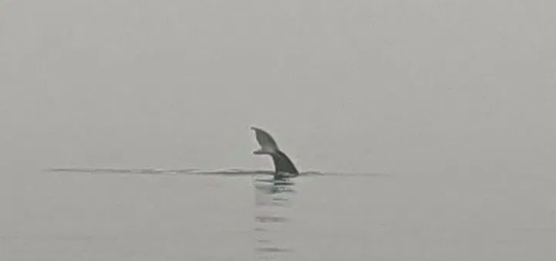
Some cruisers will opt to take the “inside route” past Cape Sutil, avoiding the bar almost entirely, but there was no wind and we wanted to see what the bar was all about. There was indeed a low, swirling swell that would rise up impressively in opposing winds or at higher states of flow.
Once across the bar we were all smiles, but the grins turned to scowls as fog closed in and stayed with us all the way to Sea Otter Cove. Visibility was less than half a mile, with time enough to avoid collisions, but it was reassuring to have radar and AIS. We relied on both, especially radar, numerous times in fog during the months that we explored the west coast.
Rounding Cape Scott was uneventful, the seas were confused and choppy but the waves were not as feared. Sadly, we couldn’t see the cape due to the fog, except on our plotter and radar screen, which apparently is not unusual.
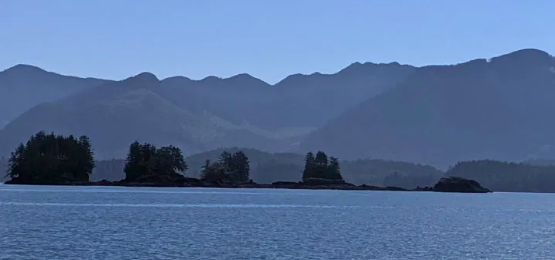
The biggest factor to a safe and enjoyable cruise of the west coast is time. Have plenty of it, and don’t sail to a schedule. There are several capes on the west coast with rather ominous reputations and we approached them all the same way: if conditions were in question, we stayed put.
Be prepared to skip some places if weather holds you up, or be realistic about how much you can see if you have to complete it within a certain timeframe. Being able to just accept and enjoy an extended wait in a safe anchorage meant we didn’t have to deal with any unpleasant weather or sea conditions on any of the hops “outside”.
I quite enjoyed those days when we sailed in the rolling swell. You forget on the “inside” how exhilarating it can feel to truly experience the ocean under you, in particular when passing the shoreline near Kyuquot Sound with stunning barrier reefs to starboard and the dramatic coast to port.
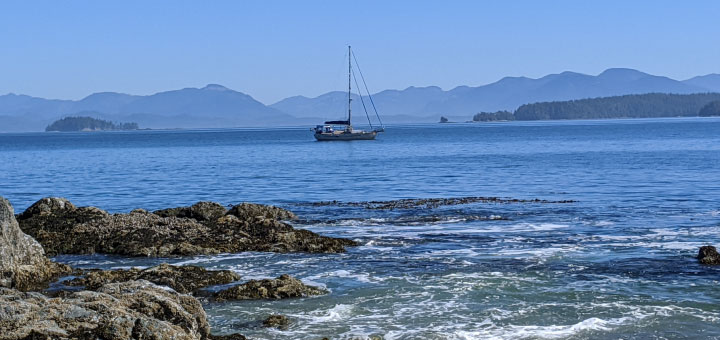
Bearing in mind possible long waits in adverse weather, provision for longer intervals when you may not be able to get to a store. Use special produce bags, and buy veggies that keep well, like onions, cabbage, carrots and squash. Have a supply of canned food options on hand. Ration your water if you don’t have a watermaker, and carry an emergency supply. Have a good supply of engine spares as help is not easy to come by should you need it.
Be well aware of where you are at all times and have a plan B in case the weather changes suddenly.
Be ready for the swell by having meals premade so you don’t have to cook underway, and nutritious snacks you can grab easily. Stow everything that can possibly move. Stuff cushions in lockers so you don’t have to listen to loose items crashing into each other, increasing the stress factor. If you are on a sailboat, put up the main to steady the boat even if there is no wind.
To receive weather reports, a clear VHF signal is not always available, so if possible, have an alternate forecasting source. If you have an SSB, Environment Canada weather for the west coast is broadcast daily on 2054 kHz at 0550, 1150, 1750 and 2350 PDT.
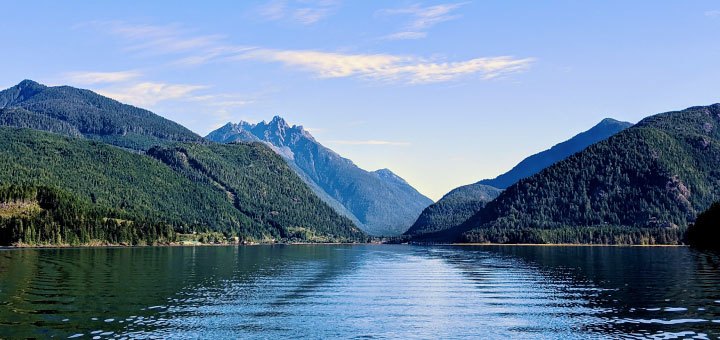
Some skippers, when they have rare cell service, take screenshots of the next five or so days on their phones with weather apps like the free Windy app, which works in iOS and Android devices and Internet browsers. Of course, the screenshots must be taken with a heaping grain of salt after a few days.
Others download GRIBs to their SSB or satellite phone. Some even, with satellite devices like the Garmin InReach, have family or friends at home send coded weather reports by text for a particular waypoint of your choice.
The WX marine forecasts on VHF or SSB apply to such a large area that the forecast is often not pertinent to your location close to shore or in a protected sound, even if you can get it. That is when a satellite device and a helpful friend or the ability to download a GRIB file is a blessing.
Splendid scenery, great sailing, delightful encounters with bears, sea otters and whales, stunning night skies and the total silence of complete isolation, complex route planning, anchorages warm enough for swimming (if you can get in and out quickly) … these things all contributed to making this summer’s cruise one of the best sailing experiences I have had.
Learning to not let my imagination run wild, and remembering to trust in the boat and our abilities all added up to making this a summer to remember.
This article is courtesy of Lynne and Jim Burgoyne, who are currently building a new Salish Sea Pilot cruising guide to Vancouver Island’s west coast which should be ready in early 2021.

